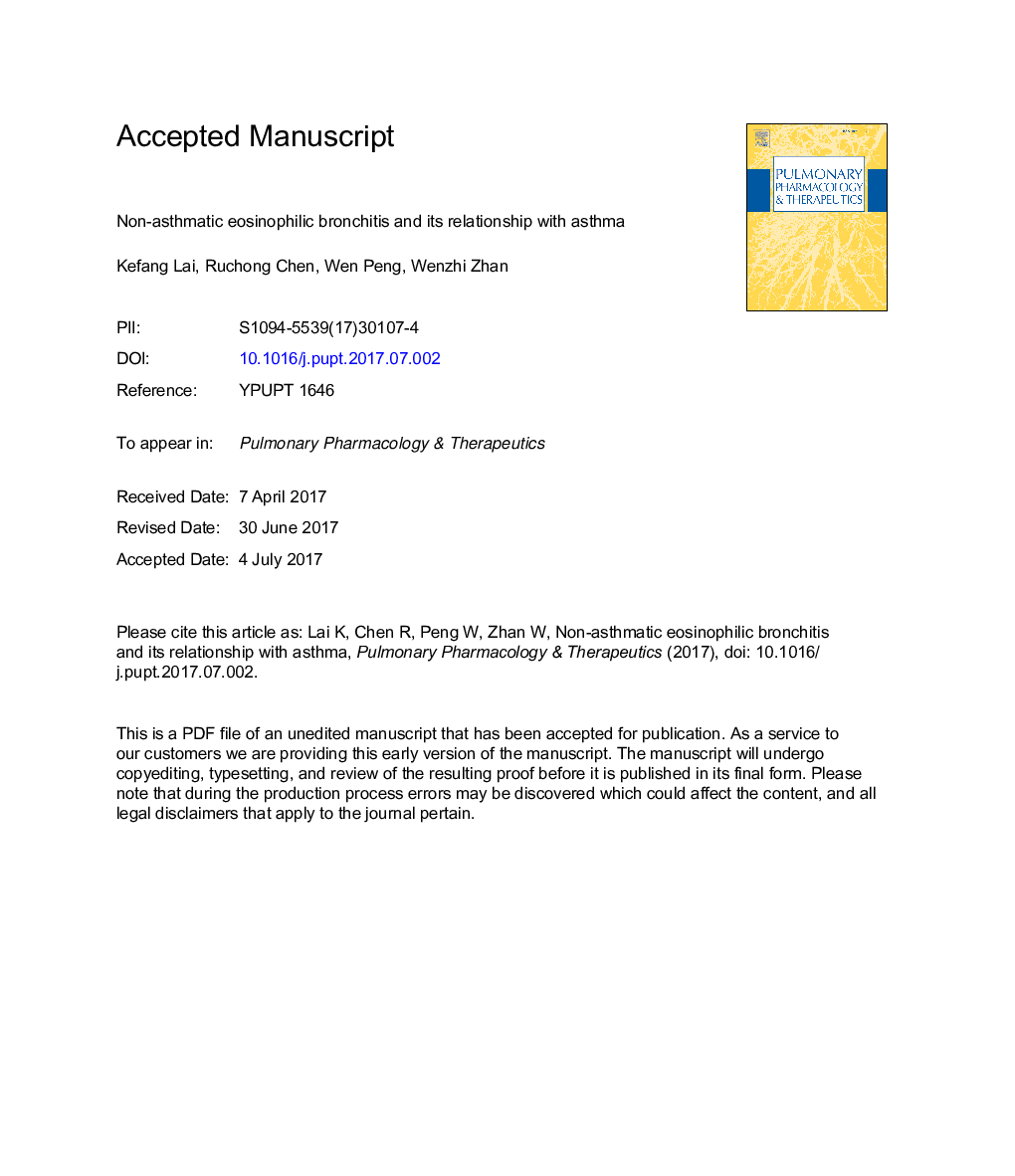| Article ID | Journal | Published Year | Pages | File Type |
|---|---|---|---|---|
| 8537918 | Pulmonary Pharmacology & Therapeutics | 2017 | 26 Pages |
Abstract
Non-asthmatic eosinophilic bronchitis (NAEB) is an important cause of chronic cough. NAEB shares similar eosinophilic inflammation of airway and response to corticosteroids with asthma. However, in contrast to asthma, NAEB subjects have no airflow obstruction and airway hyperresponsiveness. The pathogenesis of NAEB are involved with many inflammatory cells such as eosinophils, lymphocytes, mast cells, cytokines and inflammatory mediators, includingTh2 cytokines, histamine, leukotrines, prograndins and oxidative stress. The different locations of inflammatory cells and the inflammatory mediators level may explain this difference between EB and asthma. There is no study on dose and duration of treatment. On the prognosis of NAEB, long term follow-up study suggested that NAEB should be a distinct entity rather than an early stage of asthma or COPD. The relapse rate is high after treatment. Assessing sputum eosinophils after treatment is useful to identify those at risk of relapse.
Related Topics
Health Sciences
Medicine and Dentistry
Pulmonary and Respiratory Medicine
Authors
Kefang Lai, Ruchong Chen, Wen Peng, Wenzhi Zhan,
